Felicia Goes Against the Grain With Healthy, Sustainable Pasta
Can pasta be healthy for people and the planet? Felicia is on a mission to make that happen.
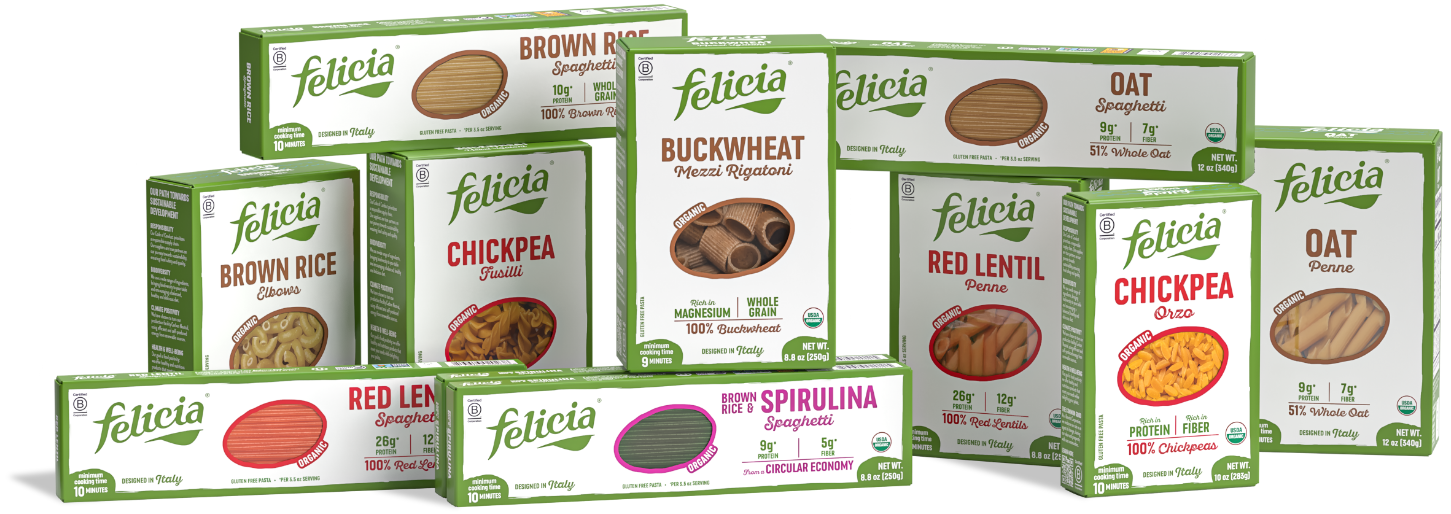
Can pasta change the world? If Felicia has anything to do with it, the answer is yes. But not just any pasta will do.
Typically, pasta is made from semolina, i.e., ground durum wheat. In a vacuum, wheat has a relatively low climate impact. Rice, for example, typically has higher average greenhouse gas emissions, and other grains like oats are often in the ballpark of wheat emissions, though much depends on factors such as how the crops are grown.
The problem, however, is that agricultural systems have largely shifted toward monocropping to support global diets. For example, the ubiquity of durum wheat for pasta — and wheat as a grain more broadly — creates issues such as declining soil health. While there's an argument that monocropping is necessary to grow enough food, that might not last indefinitely, as climate change and soil degradation could make it harder to grow food in the future.
Instead, more diverse use of farmland with at least crop rotation, or better yet growing multiple crops at once, generally coincides with more productive farmland, lower emissions, and greater biodiversity, which could be a better path forward.
That's where Felicia comes in, creating pasta products and snacks made from a diverse range of alternative grains and legumes, like brown rice, oats, buckwheat, chickpeas, and lentils. All of its pastas are also gluten-free, free of the top allergens, organic, and certain types like lentil pasta are naturally high in protein; so its products align with a wide range of dietary preferences.
Moreover, incorporating diversity into your food choices is also associated with positive health effects, while also benefiting agricultural systems and the environment.
Felciia's roots trace back to its parent company Andriani, a certified B Corp, which began in Italy in 2009 as a wholesale supplier/contract manufacturer of alternative pastas. In 2015, Andriani launched the consumer-focused brand Felicia, which then made its debut in North America in 2024. By expanding across the Atlantic, the company hopes to bring the benefits of biodiversity to a wider audience of wholesale and retail customers.
The food system has to be reimagined in order to feed a growing planet while tackling the fact that food is responsible for roughly one-third of global emissions, says Carlo Stocco, managing director, Andriani North America.
"So biodiversity is, in a certain way, the link that connects the environment with our economic and social responsibility," he says.
Improving the Supply Chain
To facilitate biodiversity, product quality, and a healthier planet overall, Felicia is also actively trying to improve its supply chain processes.
In Italy, parent company Andriani has a vertically integrated supply chain, working with over 500 farmers across approximately 8,500 hectares, making it the country's largest dried legume supplier. It also has its own mill to process flour for Felicia pasta, explains Stocco.
Along with this vertical integration, Andriani has digitized field operations to be able to gain a live view of growing conditions to improve product quality and implement sustainability practices to reduce its environmental footprint. The company is currently working toward a regenerative agriculture certification, adds Stocco.
Now, the company wants to replicate these types of operations in North America, having recently completed a production facility in Ontario. That helps from both a business development perspective and sustainability perspective, as more local manufacturing can reduce the company's carbon footprint, notes Stocco.
Already, the company has taken large strides toward reducing its carbon footprint, through a combination of emission reduction initiatives, renewable electricity purchase agreements, and carbon offset purchases.
In 2024, for example, the company completed the implementation of on-site solar at its pasta factory in Italy. It also added a biomass boiler that not only reduces up to 90% or so of natural gas consumption from the facility's heating system, according to Andriani, but it also contributes to a more circular supply chain. The company uses inputs such as buckwheat bran waste from the company's milling process to feed the boiler, along with agricultural waste from other nearby supply chains, thereby widening the circle.
The company also started mapping out its Scope 3 emissions last year and noted in its latest sustainability report that it is looking to set a net-zero goal across its value chain in alignment with the Science Based Targets initiative (SBTi)
Meanwhile, the company has achieved carbon neutrality across its scope 1 and scope 2 emissions. That includes removing all scope 2 emissions with the help of a Guarantee of Origin (GO) to secure 100% renewable electricity. And while Andriani does use carbon offsets for scope 1, the company notes that it does so after trying to implement emission reductions, and its goal is to continually reduce emissions to the point where offsets are only needed for a fractional amount of impractical-to-avoid emissions.
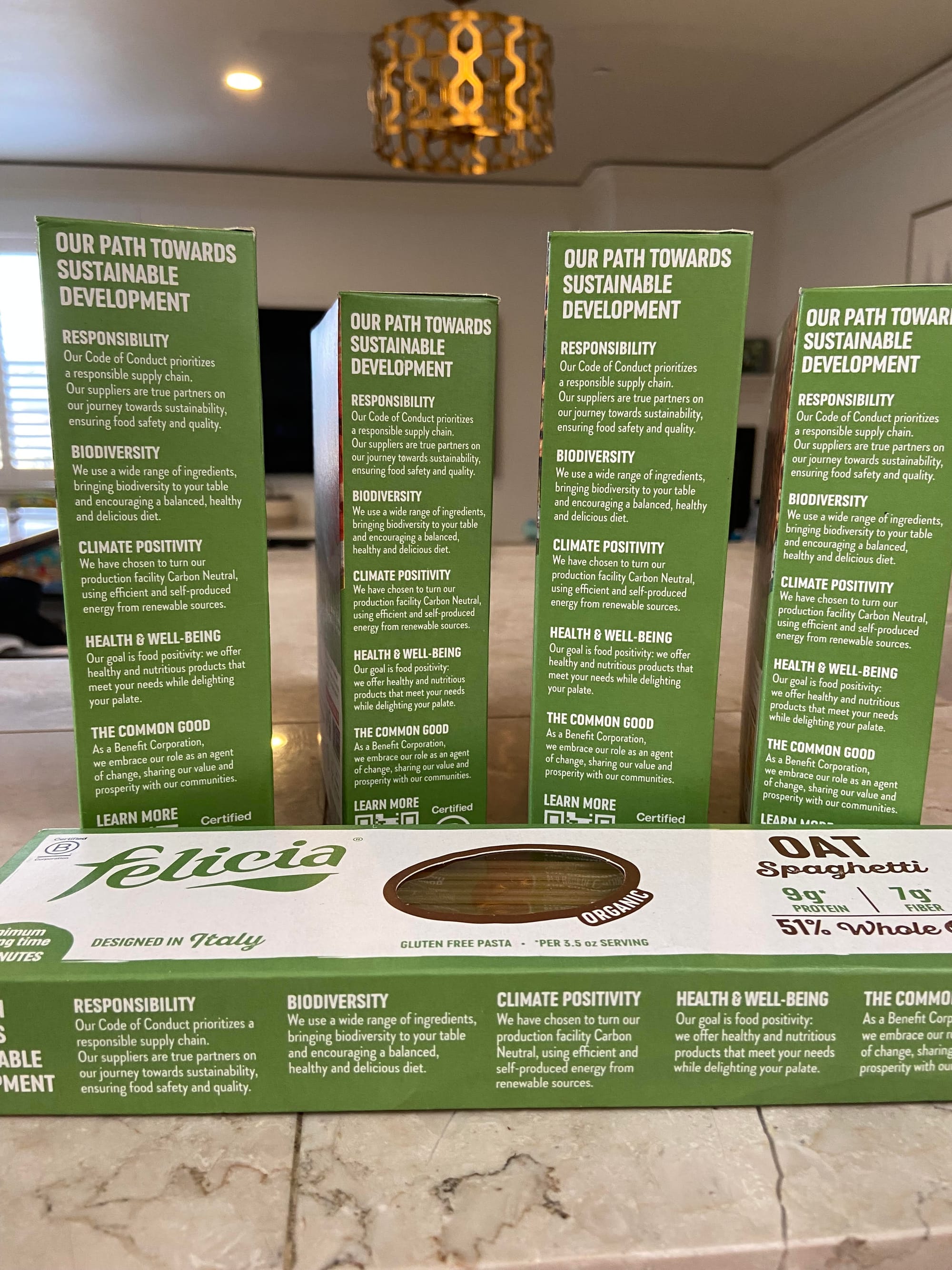
In expanding in North America, the company similarly wants to make a positive impact, including by working with partners like growers and its wholesale customers.
"Our commitment is to act like a change agent," says Stocco. Instead of treating ingredients like legumes and cereals as commodities and using agricultural practices that degrade soil, there's opportunity to create more value throughout the entire supply chain, he adds.
Expanding Palates
While Felicia and its parent company have implemented a lot of great environmental practices and display strong values, ultimately its impact depends on reaching more customers.
The fact that all its pastas are naturally gluten-free and vegan gives Felicia a built-in market, but it hopes to also appeal to a wider base. Part of that could be achieved through its range of ingredients, like ones that are naturally high in protein or include superfoods.
For example, Felicia sells a brown rice and spirulina spaghetti, with the spirulina being grown in reused water from Felicia's pasta production. Spirulina is a type of algae that has a whole host of reported nutritional benefits, and it's also generally considered a low-impact agricultural product that absorbs carbon while growing in water.
"So it's really a great ingredient that also happens to have a positive impact," says Stocco.
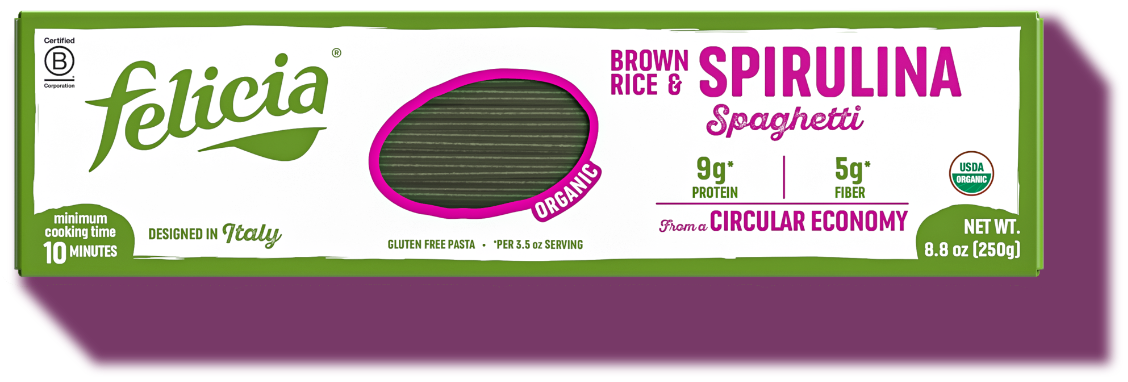
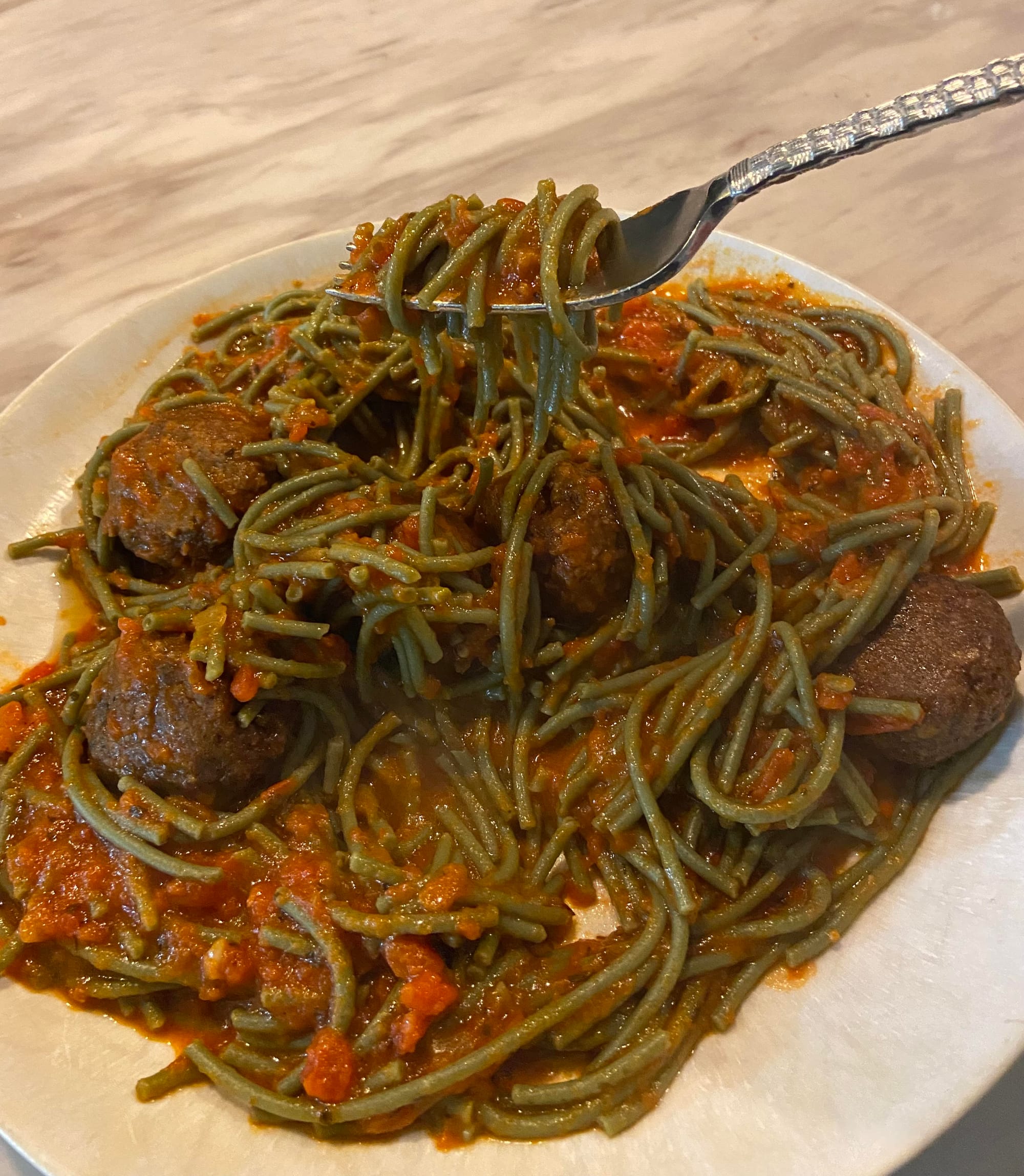
Felicia's red lentil pasta also has strong appeal because of its naturally high protein and fiber content. A 3.5-ounce serving has 26 grams of protein and 12 grams of fiber.
"It's a single ingredient, it's organic, so it's quite a unique proposition. The product speaks for itself in a certain way," says Stocco.
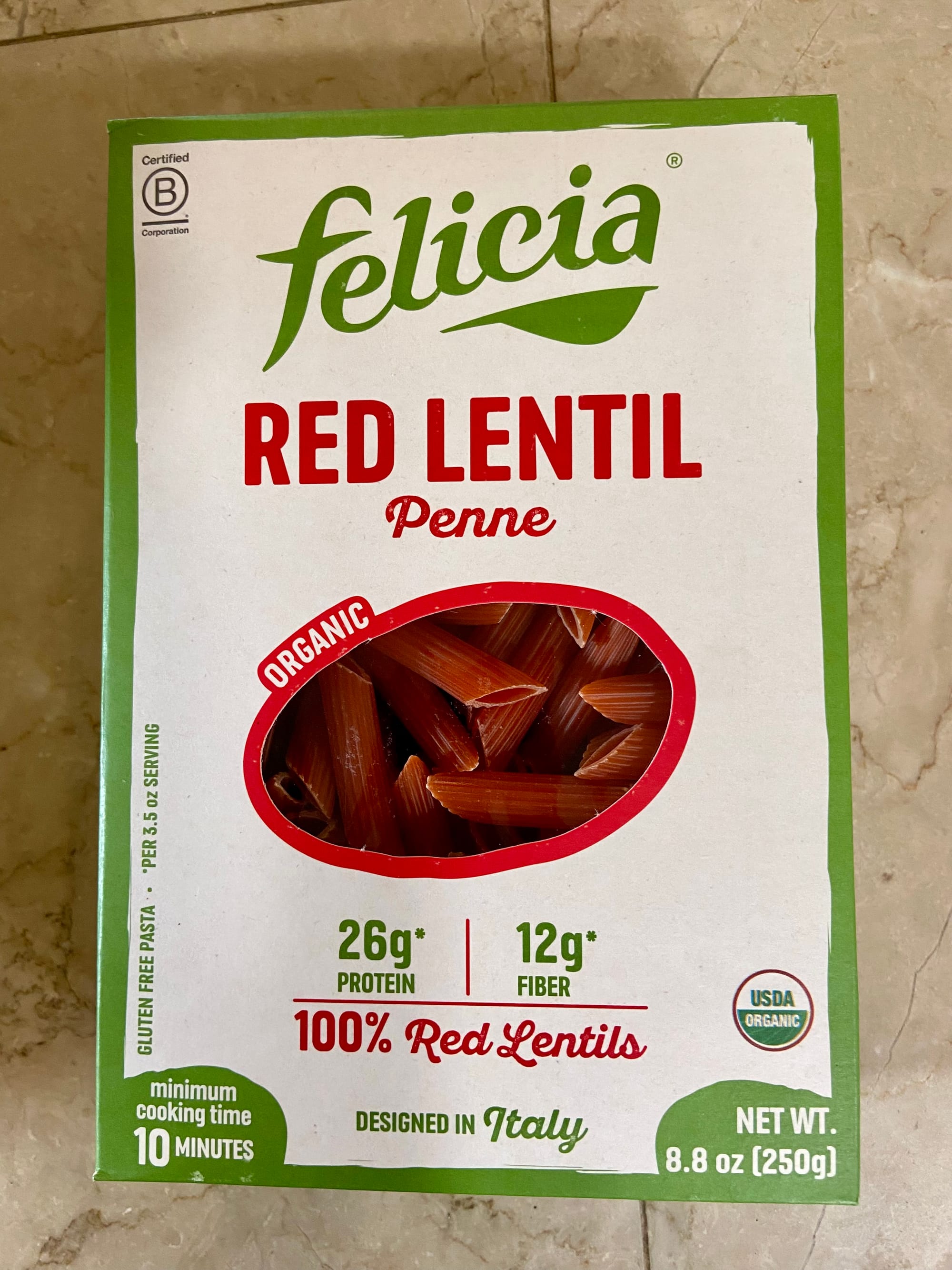
"We also have other products that we love and probably we need to communicate the benefits better. For example, we have a great oat product that really tastes like semolina pasta — even better," adds Stocco.
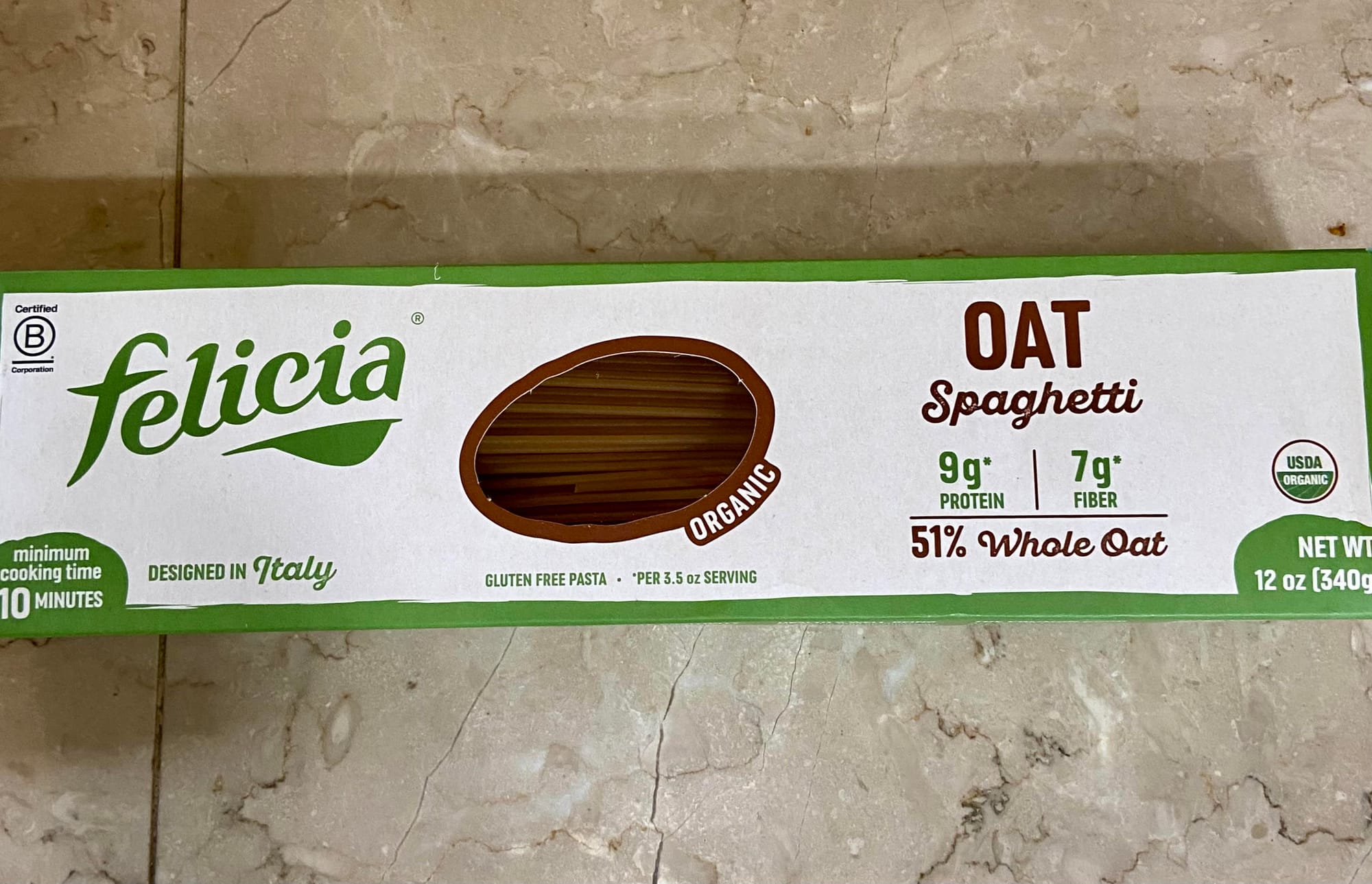
"Our brand is also structured in a way that could incorporate other ingredients where we see the opportunity," he notes.
Felicia's variety also provides a value proposition to retailers trying to appeal to a wide range of consumer preferences.
"They do not have to fragment shelf space too much and could trust in a brand that is able to innovate, to propose new items every year and has also the reliability of the supply chain being vertically integrated," says Stocco.
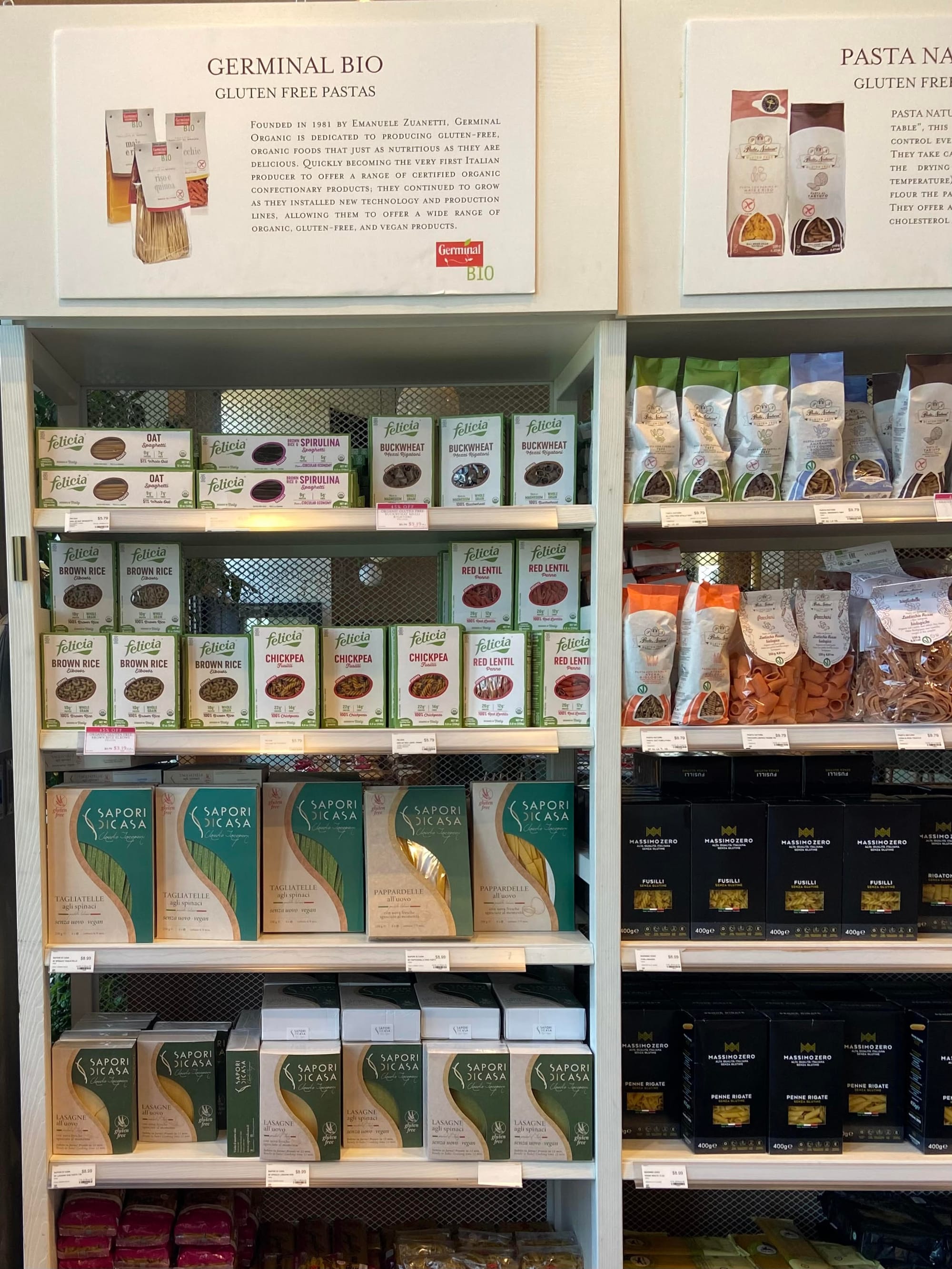
Currently, Felicia's distribution is relatively limited in North America, though the company does have plans to expand to more shops across the New York area, while also working on potential deals with national, natural retailers.
To get more customers to try its alternative ingredients, Felicia is focusing on the "dual users" who shop for both regular semolina pasta but also sometimes look for healthier options or different product experiences, says Stocco.
"We want to enlarge this group because it happens also to be the group that buys pasta more frequently," he explains.
The company even wants to expand how consumers see pasta as a meal.
"Anecdotally, I use pasta also for breakfast, for example. And I know that it's not common, but there is no reason why you cannot have a plate of pasta for breakfast. It's rich in nutrients" and fills you up for the morning, notes Stocco.
"So, we need to get rid of the stigma around healthy pasta because it tastes good, it's good for you, and also good for the environment in our case," says Stocco.
Disclaimer: This article is not meant to serve as nutritional advice and has not been written or reviewed by a medical professional.
Disclosure: Eating for Good's parent company, JournoContent LLC, has clients involved in sustainability-related areas, such as carbon offsets, among others. The owner of Eating for Good, Jacob (Jake) Safane, has investments in sustainability-related companies, among others.
As such, conflicts of interest related to these and other investments/business relationships, even if unintended, may exist at times. Please email info@eatingforgood.com if you'd like further clarification on any issues.
